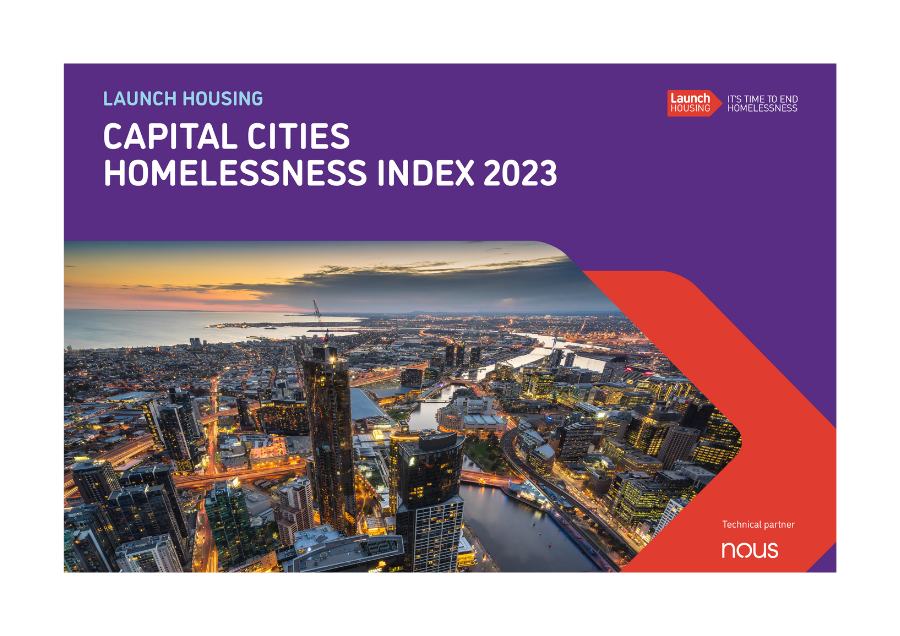Launch Housing has developed the Capital Cities Homelessness Index to inspire advocacy and action to end homelessness.
Homelessness has been on the rise for over a decade. This is true not only in Australia, but across many OECD countries.
Ongoing cost of living pressures, along with a shortage of safe social and affordable housing, have pushed people into homelessness. Every city has approached the issue differently, implementing policies and practices other cities can learn from over time.
No city can trial everything. So by working together and sharing what we know works, we all have a better chance at implementing policies and practices that will help shift the dial to provide all people with housing.
Together we can end homelessness.


To understand how well different cities are doing in tackling homelessness, this index includes two distinct measures of homelessness – rates of total homelessness and rates of rough sleeping – and two key drivers of homelessness – social housing and low-income households in rental stress.
The Final City Rank was developed by calculating ratings for each city across these four domains and then ranking the total ratings for each city.










Ireland’s Government is committed to ending homelessness, including rough sleeping, but despite past policies and initiatives, homelessness continued to worsen. In 2021, the Government introduced Ireland’s first housing legislation, the Affordable Housing Act 2021. Its housing plan, Housing For All, provides for historic levels of government investment to grow the supply of social housing over the next ten years and a commitment to end homelessness by 2030.
Melbourne is ranked in 6th place overall, tied with New York, Toronto and Auckland.
On individual measures, Melbourne was ranked:



















